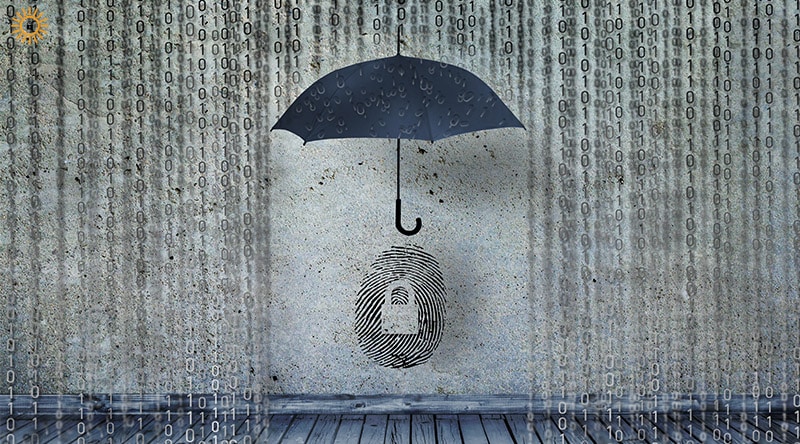- October 12, 2020
- Tags:

Businesses all around the world are increasingly embracing emerging technology for the enhancement of operational capabilities. This allows small and mid-sized businesses (SMBs) to expand their footprints on a global scale, despite technological challenges, including business disruptions stemming from cyberattacks. Therefore, SMBs must develop and maintain a proactive cybersecurity posture to remain competitive in today’s digital transformative era.
As technological capabilities continue to advance and become a critical factor for business growth, several small to mid-sized businesses (SMBs) have leveraged its reach to help grow global brands from the kitchen tables and college dorms. As emerging technology matures, SMBs are engaging its growth inducing capabilities to help strengthen the effects of rapid growth. For instance, cloud storage computing is helping everyday entrepreneurs leverage the same advantages that mega organizations, such as IBM and Microsoft, once enjoyed in the 1980s.
However, such technological advancements introduce emerging risks, threats, and vulnerabilities that are capable of erasing companies and shutting down corporate entities as we know it. Below are some interesting facts about data breaches in 2020 that involved SMBs:
-
- 28% of all data breaches in 2020 involved small business enterprises.
- External actors perpetrated 70% of these cyberattacks.
- The scary part is, organized criminal groups were behind 55% of data breaches.
- On the other hand, internal actors account for 30% of these cyber accidents.
The above data shows that SMBs form a vulnerable group that quashes the general belief that SMBs are immune to the reach of cyberattackers. Irrespective of how small or large an organization appears to be, cyber adversaries are more focused on exploiting accessible vulnerabilities for nefarious reasons.
Why Small and Mid-sized Businesses (SMBs)?
Larger organizations rely upon more expensive security solutions to defend against malicious activities. However, SMBs are often constrained by budgetary concerns. Thus, making SMBs a more enticing target to cybercriminals.
Studies have shown that financial gain tends to be the primary goal of cybercriminals, as 83% of cyberattacks are financially motivated. Meanwhile, state-sponsored cyberespionage remains a distant second at 8%, and 3% are attributed to disgruntled individuals or script kiddies.
Types of Cyber-attacks SMBs Should Be Familiar With
The most common types of attacks on small to midsize businesses are implemented via computer viruses, phishing, and ransomware – all of whom are injected into a corporate computing environment via email. Together, the mentioned attack methodologies comprise nearly 74% of all cybersecurity incidents affecting every industry and sector today. Hence, it is important to note that cyber adversaries do not hesitate to carry out all types of attacks on small businesses.
Below highlights the popular types of cyber-attacks plaguing SMBs across all industries and sectors:
-
- Phishing Attacks: malicious actors send innocent-looking emails appearing to originate from genuine business sources. Clicking on malicious links in a phishing email enables the threat actors to record employee keystrokes, control computer systems, and access sensitive financial information.
- Ransomware Attack: clicking on a malicious link or downloading the attachment in a phishing email may install ransomware (a kind of malware) on a user’s device which may lock the critical files, disks, etc. until a ransom is paid.
- Man-in-the-Middle (MITM) Attacks: an attack where malicious actors secretly relay and alter the information, thereby compromising its confidentiality and integrity.
Countermeasures SMBs Can Adapt To Develop A Sustainable Cybersecurity Awareness Culture
-
- Implement a regular security awareness and training programs to educate stakeholders about the different methods employed by cybercriminals to compromise systems and disrupt business operations – this should include response procedures as well.
- Emphasize the need to maintain cybersecurity hygiene, which includes the implementation of a robust access control policy that highlights the importance of strong passwords as well as regular password change cycles.
- Equip your hardware systems with endpoint security solutions, such as firewalls, antivirus and antimalware software, and endeavor to patch them whenever an update is available from the vendors.
- Use secure internet connections while working from home, the office or at a public location. For business operations, the use of a virtual private network (VPN) must be deployed to power all corporate network communication traffic.
- Implement an effective incident response framework, equipped with an experienced Computer Incident Response Team (CIRT), capable of continuously monitoring attack vectors for mitigation procedures.
In Closing
Majority of viable business operations today are powered by technology, therefore it is nearly impossible to afford using the internet. As such, knowing and implementing safer security best practices should always be first on everyone’s agenda. One of the ways to thwart malicious cyber incidents and manage a robust security posture is to enhance company-wide cybersecurity education programs.
As the month of October is celebrated as ‘Cybersecurity Awareness Month,’ it is critical that SMBs promote a security awareness culture aimed at arming employees with the tools they need to defend business assets. Employees are the first in the line of defense; the first steps to achieving cybersecurity resilience in today’s digital transformation era begins with awareness training.








